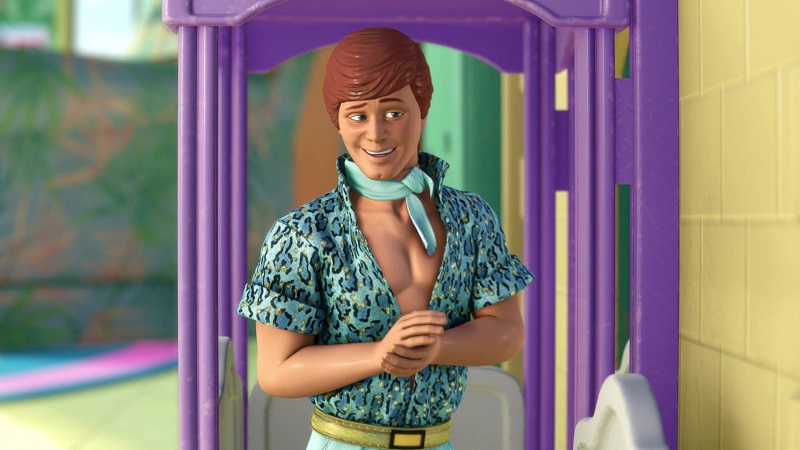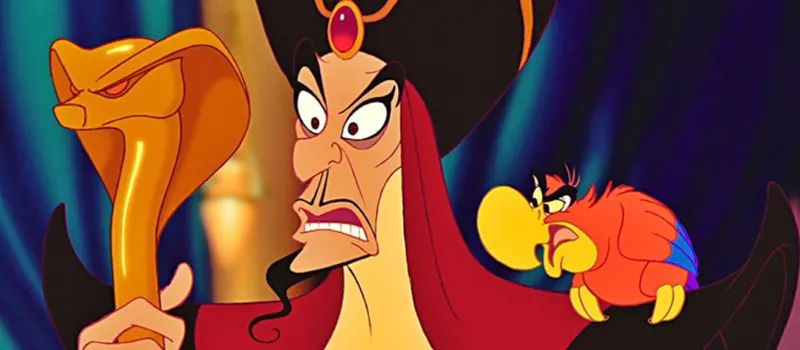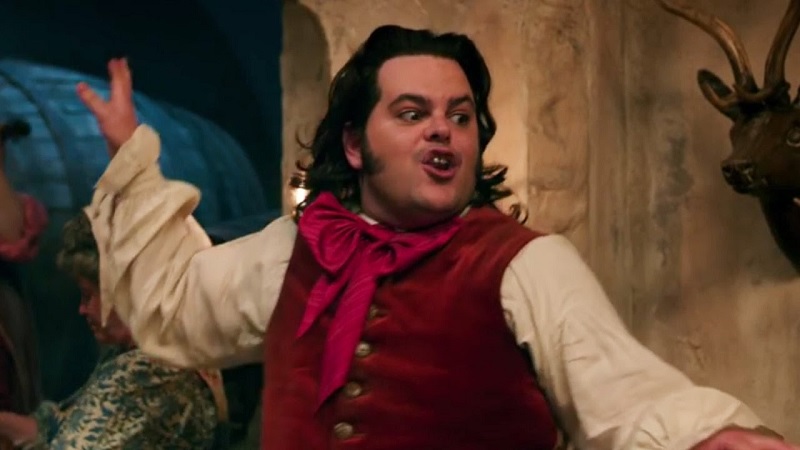17 gay and LGBTQ Disney characters – from coded to canon to catastrophe
Oaken from Frozen, we see you

Words: Jamie Tabberer; picture: Disney
Almost a century ago, a company was founded in a tiny Hollywood office; 98 years on, the Walt Disney Company – and daughter companies Pixar and Marvel Cinematic Universe – is the world’s biggest cultural force.
So why, despite decades of power, did it take 97 years for its lack of queer representation to be addressed?
Better late than never, we suppose: in March 2020, Disney boss Bob Chapek promised “increased commitment” to LGBTQ characters. Eyebrows were raised, and rightly so: some subsequent attempts have been major disappointments. But unprecedented change is afoot: in April, it emerged Pixar will feature its first trans character in a new project.
Ahead of what is hopefully a watershed moment for the entertainment industry, here is Disney’s chequered LGBTQ history in a nutshell.

Ken from Toy Story 3 (2010)
What were they thinking? This perma-tanned lover of garish prints – depicted as deeply insecure in his femininity (“I’m not a girl toy, I’m not!”) – is the fly in the ointment of the most critically-acclaimed animated movie ever.
As one critic said at the time of “closeted gay fashionista” Ken: “Pairing homophobia with misogyny, the jokes about Ken suggest that the worst things a boy can be are either a girl or a homosexual.”

McGregor from Jungle Cruise (2021)
Disney faced more flak in 2018 when Jack Whitehall, a straight man, was revealed as playing the “hugely effete, very camp” gay man McGregor in Jungle Cruise. But when the film was released this year McGregor proved ineffectual and barely caused a ripple, positive or negative. (Unlike James Corden in The Prom!)
That said, the one blink-or-you’ll-miss-it reference to McGregor’s sexuality (he says he broke up with his female fiancée as his interests “lie elsewhere”) is pitifully vague anyway.

Loki from Loki (2021)
Much like Jungle Cruise, preliminary coverage of Disney+/MCU TV series Loki seized on the titular hero’s bisexuality. This created too-high expectations – in the end, the lone mention was a Twitter visual, attracting the ire of viewers like It’s A Sin creator Russell T Davies, who called the move “pathetic.”
Still, the character is canonically bi – and gender-fluid, to boot.

Artie from Cruella (2021)
Disney faced new gay-baiting accusations over the genderfluid-fashion-loving Artie in this year’s Cruella. But when the gay actor playing Artie (John McCrea) took ownership of the character (telling Attitude in an interview “to me it’s official: he’s queer“) the criticism didn’t really stick. The biggest problem, perhaps, is his lack of screentime.
Is Artie gay? Bisexual? Pan? Non-binary? Or does he eschew labels, à la Harry Styles? In which case, is it only right no assurances are given? Thanks largely to McCrea’s performance, Artie’s ambiguity feels authentic rather than a cop-out. Which, let’s face it, wouldn’t have been the case had a straight actor played him.

Hugo and Djali from The Hunchback of Notre Dame (1996)
We’ve had Lady and the Tramp – why not The Gargoyle and the Goat? Once again, this is an example of Disney turning to anthropomorphism (the attribution of human traits to an animal or object) to test waters. Faced with criticism, the line would have been: a talking rock and an earring-wearing billy can’t be gay!
In Ken’s case, this playfulness was unsubtle. Here, it’s near-imperceptible – but it’s there. No mean feat in 1996.

Li Shang from Mulan (1998)
Two years later, Mulan explored sexuality and gender in impressively daring ways – and one imagines it would cause more controversy if released for the first time today.
In the film, a young woman disguises herself as a man to serve in the Imperial Army and battle northern invaders in China. Mulan’s eventual love interest – the military general Li Shang – appears to develop feelings for her long before he finds out the truth about her womanhood.
In the very least, the plot beautifully illustrates how you fall for who, not what, a person is. For some, though, Li Shang is a fully-fledged “bisexual icon” who should never have been cut from the 2020 live-action film.

The San Franciscan bear from Inside/Out (2015)
“There are no bears in San Francisco,” says one character in Inside/Out, as one replies: “I saw a really hairy guy. He looked like a bear.” Cue to a strapping pizza deliverer in the City who would no doubt frequent SF’s Lone Star Saloon – if he weren’t, you know, a literal bear.
Again, there’s a lightness of touch here – or should that be lack of commitment? – that verges on frustrating. Did the most rugged of gay subcultures deserve better? Then again, Pixar is nothing if not a safe pair of hands and pitches things just right. (Look at how they handle the afterlife in Coco and Soul!).
As such, we’re glad it’s this studio overseeing Disney’s first trans character… We just hope their identity is more than a hint this time.

Victor from Love, Victor (2020)
There was debate around Disney+ relegating the gay-centric TV version of hit film Love, Simon to its adult-focused ‘Star’ section. (And, as this gentle and emotive teen show premiered on Hulu last year, we’re not sure how much credit Disney deserves for its existence in the first place). There was more debate still when a straight actor (Michael Cimino) took on the titular gay role.
On the latter point, though, Love, Victor demonstrates how such casting choices are about context. In this context, Cimino turns in a nuanced and winning performance across two seasons, just as his predecessor Nick Robinson did in the trailblazing film. And the same goes for Cimino’s castmate and on-screen love interest George Sear, who plays Benji.

Specter from Onward (2020)
Last year marked a real milestone in Pixar’s LGBTQ journey, as it introduced its first officially, canonically queer character. Even better, kindly unicorn Specter is voiced by out and proud Hollywood heavyweight Lena Waithe.
The cyclops cop, who patrols the city of New Mushroomton, is also a mum, at one point saying: “It’s not easy being a new parent – my girlfriend’s daughter got me pulling my hair out, okay?” It’s another easily missed reference, but it’s resolute. And, apparently, enough to see the film banned in multiple Middle Eastern markets.

Elsa from Frozen (2013)
Rewind seven years from Onward and we’re back to the world of inference; a very different ballgame we hope we’re finally leaving behind. But of all Disney characters widely interpreted as LGBTQ, none have had the impact of Elsa.
The lead character in the third highest-grossing animated film of all time (2019’s Frozen 2 is at number two), Elsa is the rare Disney princess to avoid handsome princes altogether. Some say this carries no special significance, others that it implies asexuality or aromanticism. But a very, very large section of Frozen‘s fandom agrees: Elsa’s a lesbian.
Certainly, supposed coming out anthem Let It Go is lyrically direct (“I don’t care what they’re going to say, let the storm rage on, the cold never bothered me anyway”) and Frozen co-director Jennifer Lee has fuelled the fire by saying she “loves” the conversations around Elsa’s sexuality.
It’s been reported Elsa may have a girlfriend in Frozen 3. If so, it could prove as landscape-changing as a premiership footballer coming out.

Oaken from Frozen (2013)
While it’s strongly insinuated Elsa’s a lesbian, a minor character from the same film is demonstrably shown to head up a same-sex parent family: Oaken.
We meet the towering shopkeeper when Elsa’s sister Anna wanders in to escape the cold. He later introduces his family (“Hoo hoo! Hi family!”) warming up in a sauna. The family is comprised of another blonde man and their four kids. In the grand scheme of things, this was a big step for Disney, and one obscured by the hoo-ha around Elsa.
Tracing the dots between this, Inside/Out, Onward, and so on, you see how Pixar has continually pushed for change… and probably changed the world in the process.

Jafar from Aladdin (1992)
We know, we know, it has never been confirmed that Jafar is gay. But taken with the several other charismatic villains of the era (Scar from The Lion King, Governor Ratcliffe from Pocahontas) some 90s viewers – this writer included – sensed strong subliminal messaging. At the time, that mattered.
Jafar is arch, sophisticated, camper than a row of tents… but he’s powerful (and some might say sexy?) in his flamboyance; it’s not a characteristic that’s played for laughs. Was his imprisonment of Jasmine about power, rather than desire? And was his fixation with Aladdin really an attraction? One he, understandably, needed to repress centuries ago in the Arabian city of Agrabah?

Ursula from The Little Mermaid (1989)
Glamorous sea witch Ursula is so fully realised a character, she simply oozes the essence of queer. Or, more specifically, the essence of outrageous and iconic drag queen Divine, who inspired the character. (Yes, the one Eureka recently impersonated on RuPaul’s Drag Race).
Is Ursula a drag queen? A lesbian with a compelling mix of butch and femme touches? A pansexual half-octopus open to all? It’s logical to assume the character is queer-coded, for the film carries the DNA of the late lyricist Howard Ashman, who was gay, and whose magical songs, including A Whole New World, were credited with reversing Disney’s waning fortunes in the 80s/90s.
We would have loved to see an LGBTQ star in the role in the upcoming remake – but we’re open to what Melissa McCarthy does with the character.

Lefou from Beauty and the Beast (2017)
Beauty and the Beast director Bill Condon confirmed Disney’s first “exclusively gay moment” in a 2017 Attitude interview, generating global headlines. “LeFou is somebody who on one day wants to be Gaston and on another day wants to kiss Gaston,” he said of the character.
The moment – Lefou dancing with another man at the film’s end – was fleeting, albeit enough to warrant censorship in Malaysia. Still, the film brings representation in other ways, from out gay actor Luke Evans’ casting as Gaston to Sir Ian McKellen as a Vicious-esque Cogsworth.
Plus, LeFou is back for a Disney+ TV show, and a second chance to get things right.

Luca and Alberto from Luca (2021)
Forget Call Me By Your Name‘s Elio and Oliver; it’s all about Luca and Alberto. In this heartwarming tale released this year, two teen boys come of age over one crazy summer in a sun-kissed coastal village in Italy. All the while hiding the fact from judgemental townsfolk that they’re actually sea monsters.
The film’s gay subtext is similarly disguised – but Disney and Pixar arguably break through the inference looking glass with Luca. Granted, the boys’ sexualities are never implicitly stated, but this works to the film’s advantage. The subject was barely talked up beforehand, so its existence came as a pleasant surprise. And in a nice bit of casting synchronicity, Alberto is voiced by recent Attitude cover star Joshua Bassett, who this year came out as a member of the LGBTQ community.
The filmmakers maybe missed a trick by not having the boys at least kiss – but perhaps that’s unnecessary. Watch the film: there’s absolutely no doubting what it’s really about and that its intentions are pure.
The Attitude October issue is out now.
Subscribe in print and get your first three issues for just £1 each, or subscribe digitally and get 50% off until 26/9/2021.

